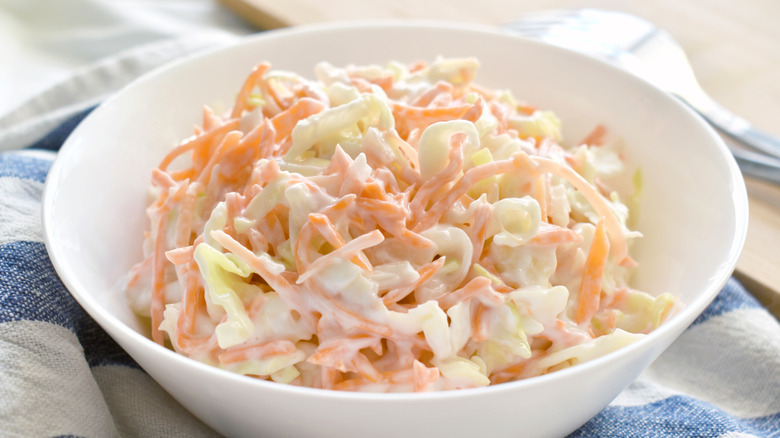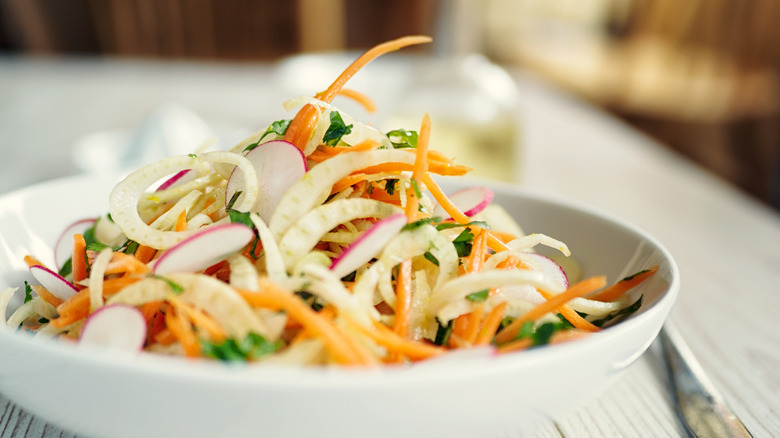The Big Difference Between Slaw And Coleslaw
Coleslaw is not a barbecue mainstay by accident. There is no better accompaniment to tender, smoky barbecued meats than creamy, tangy crunchy coleslaw. You might be used to saying "slaw" as shorthand for coleslaw. However, slaw and coleslaw are separate dishes. Coleslaw, in all of its many wonderful iterations, features cabbage, while slaw does not. We admit this is a minor difference between the two.
This distinction is linked to each dish's name. Coleslaw has an ancient history. Romans were reportedly combining cabbage and vinegar centuries ago. A little while down the line, Dutch settlers in New York did so as well, calling their own recipe "koosla." In Dutch, "kool" means cabbage and "sla" means salad. Thus, the combination of the two indicates a cabbage salad, while the latter half of the word indicates only salad.
Coleslaw can be made with any shredded cabbage you like, along with matchstick carrots and a mayonnaise-based dressing. You can also make a vinegar-based coleslaw if mayonnaise isn't your thing.
Don't sleep on slaw
What exactly is slaw? Slaw is a crunchy vegetable salad that's usually coated in a creamy or tangy dressing. No cabbage is necessary. As you can imagine, this opens the door to almost endless variations, but there is no need to be intimidated.
Allow us to suggest that you tailor your slaw to whatever cuisine you'll be eating. If you're going to enjoy some Vietnamese beef skewers, try making a slaw with carrots, cucumber, daikon radish, cilantro, sugar, lime juice, rice vinegar, and a touch of fish sauce. If your hosts are grilling a French-inspired lemon and herb chicken, consider making a slaw out of apples, fennel bulbs, Belgian endive, minced tarragon, and white wine vinegar.
When preparing either coleslaw or slaw, we recommend you skip the store-bought options and instead make them fresh. These dishes are meant to be crunchy. As such, there's nothing to be gained from purchasing something that has been sitting out for longer.

